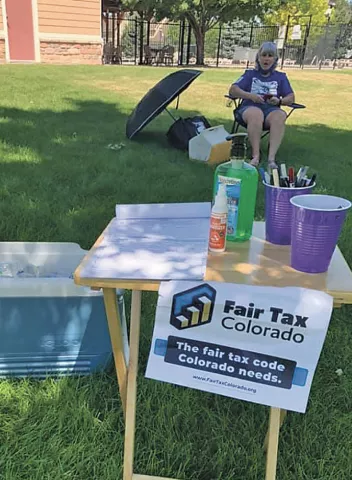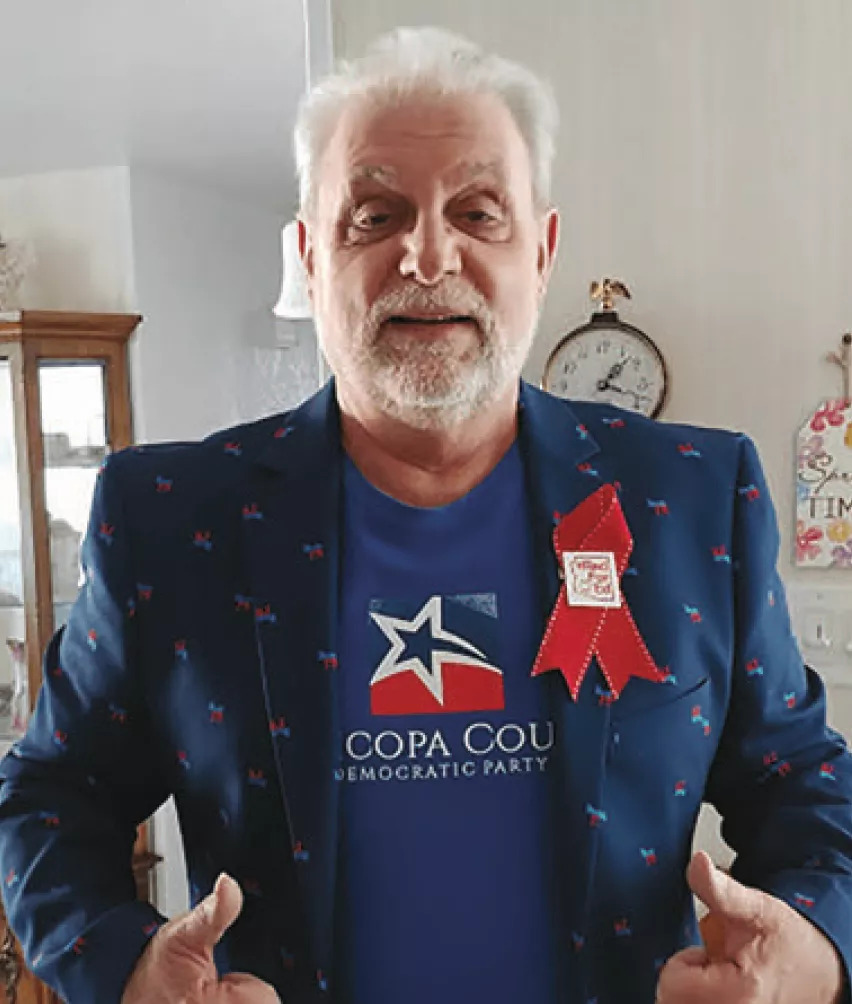Even a global pandemic can’t stop NEA-Retired’s storied legion of political activists.
In this political season, which many call the most important of their lives, retired educators are campaigning hard for local, state, and federal candi- dates who support public education. They’re also raising money for NEA’s political action committee, the NEA Fund for Children and Public Education, and gathering thousands of signatures to put school funding initiatives on local ballots. NEA-Retired members are even running for office.
“Everybody recognizes that going door to door will get you the most bang for the buck, and we can’t canvass now like we usually do,” acknowledges retired Arizona school bus driver Marshall Militano. But that isn’t stopping him or many other NEA-Retired members from getting their political work done. The stakes are too high to back down, he says.
Electing Joe Biden
At the top of the list for many NEA-Retired members is electing former Vice President Joe Biden to the White House. “I will be doing everything I can in Montana to help with that!” promises Moffie Funk, a former Montana History Teacher of the Year and a current state representative. We need a president who is committed to improving public schools, instead of abandoning them, Funk believes.
We also need a president who cares about people, not profits, says Militano. “For 50 years, I was a conservative independent. I’m still conservative, but back when [Donald] Trump announced, I knew I had to do something different,” says Militano. “I knew people were not going to be cared for, and, as a Christian, I believe it’s our duty to reach out to people. People come before businesses.”
Turning out the vote for local candidates
Many NEA-Retired members also are working to elect local, state, and congressional candidates who will improve school funding and health care access. In New Jersey, Carol Friedrich and Kathy Zeigenfus are all-in for Amy Kennedy, a middle school teacher running for the state’s second congressional district.
In July, Kennedy, whose parents are NEA-Retired members, won the primary election. In November, she faces the incumbent, who switched parties last year and pledged his “undying support” to President Trump. “When I heard Amy Kennedy was thinking of running, I knew this was a person I could get behind,” says Zeigenfus. “She’s been a teacher for 16 years, has five children, and talks about preschool for everyone, which I think is important for closing the gap between the haves and have-nots,” says Friedrich, who served on the New Jersey Education Association committee that endorsed Kennedy.
“She’s also a big mental health advocate.” Ziegenfus had planned two “old-fashioned coffee klatches” for voters to meet Kennedy—one in Ziegenfus’ home and one in the clubhouse of her over-55 community. Both were canceled because of COVID-19. Instead, volunteers are focused on phone calls and texting to get Kennedy’s message to voters. “Between ourselves and the actives, we made 6,000 calls,” says Friedrich. Fighting for education funding Sometimes what’s on the ballot isn’t a candidate’s name—it’s a state constitutional amendment or other measure. In Arizona this summer, education advocates like Militano needed to gather at least 237,645 voter signatures to get the #INVESTinED measure on the state ballot in November. In July, they filed 435,669.
With his local Arizona Education Association- affiliated union, Militano hosted a drive-through signature event at a local community center, and also ran events in his driveway. Through his 5,000 friends on Facebook, he helped coordinate other activists’ efforts, making him responsible for nearly 3,000 signatures.
If approved, #INVESTinED would generate about $690 million a year for Arizona public schools by raising state income taxes on the richest 1 percent of Arizonans—the same 1 percent who received an average $47,000 federal tax cut from President Trump last year. The money is desperately needed: Arizona ranks last in the U.S. for per-student funding.
Getting education on the ballot
Meanwhile, in Colorado, educators are working to get Initiative #271 on the ballot to help repair school budgets. Since 1992, the state’s Taxpayer Bill of Rights (TABOR) has capped state spending and required voters to approve any tax increase. As a result, Colo- rado ranks 47th in the U.S. for the money it spends on public education, relative to the income of its citizens.
If approved, #271 would cut income taxes for Coloradans who earn less than $250,000, while raising them on the wealthiest residents. “Ninety-five percent of voters will see a tax decrease, but it still would raise an estimated $2 billion for the state, half of which would go to education,” says retired middle school teacher Lori Goldstein.
During a normal summer, Goldstein would be collecting signatures at crowded county fairs. Instead, she sat in pop-up stations. “I was doing my driveway for three weeks. Tomorrow I’m going to a different neighborhood to a friend’s front yard. I’ll drive to get a signature!” she says.

Retirees running for office
Campaigning for office also looks different this year, says Montana’s Funk. First elected in 2014 and now running for her third and—due to term limits—last term in the Montana legislature, Funk typically enjoys shaking hands. She likes engaging in face-to-face
conversations about the need to protect Montana’s great public schools and historic labor unions.
Now she picks up the phone. “When this all started,” says Funk, referring to the pandemic, “I started calling people to see how they were doing, see if they need help—and it’s been fabulous. I’ve been able to help people with unemployment and other issues, and it’s so gratifying.”
Funk encourages other NEA-Retired members to run for office in their communities. “We have people trying to undermine our public education system. What they’re trying to do is terrifying,” she says. But, even if retirees don’t run, they can still help in “getting out the message about candidates who support public education and support their union!”



